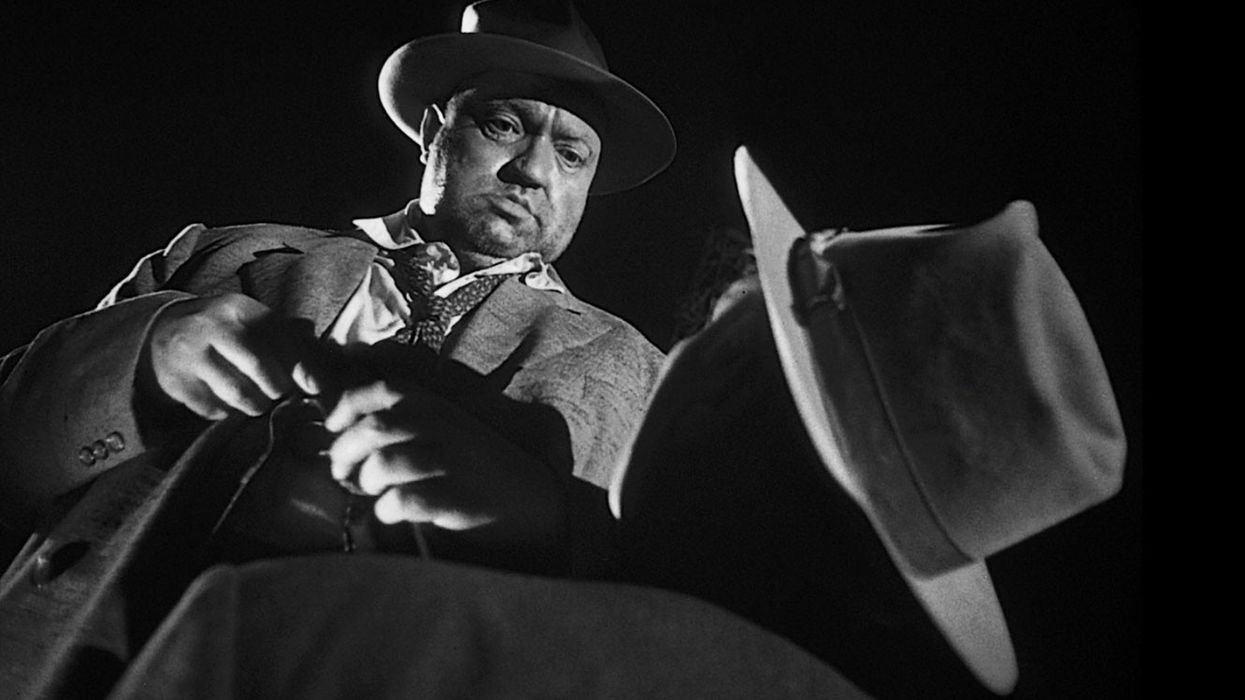7 Reasons Why Orson Welles Was Such a Boss at Cinematic Composition
Director Orson Welles isn't called the Boy Wonder for nothing.

At just 25 years old, Orson Welles made one of the most impressive directorial debuts in movie history with Citizen Kane, but being the ambitious wunderkind that he was, Welles wasn't satisfied making the "greatest film of all time." He went on to direct films including Touch of Evil, The Magnificent Ambersons, F for Fake, and Othello, using his seemingly innate talent for filmmaking to innovate the way cinematic stories were told through lighting, blocking, and composition.
In this video essay, Sareesh Sudhakaran of wolfcrow breaks down seven trademark compositional techniques Welles used in his films and how the director used them to enhance his visual storytelling to make his work more dynamic.
It's difficult to talk about the greatness of Welles' lighting and composition without also talking about the greatness of the cinematographers he collaborated with, including Gregg Toland (Citizen Kane), Stanley Cortez (The Magnificent Ambersons), and Russell Metty (Touch of Evil). These talented DPs most certainly contributed greatly to every technical and creative innovation in each project, and Welles, like many iconic directors, had a unique stylistic vision for every one of his films and worked dutifully alongside his collaborators in order to achieve it.
According to Sudhakaran, these are some of the most noteworthy and innovative compositional techniques Welles used in his work:
- Black and white: Welles was not afraid of darkness. In most of his films, scenes are lit with high contrast with characters, many times, shown completely in silhouette. He not only use light to tell his audience where to look, but he used darkness to tell them what to think about what they saw.
- Layers of light and shadow: Depth is another characteristic that frequently comes up when talking about Welles' body of work. While he often shot scenes with deep depth-of-field (where everything is in focus) to create depth, he also used light and darkness to distinguish and separate the foreground, midground, and background. In some cases, he would alternate between light and shadow to create more than three layers of depth.
- The Dutch angle: Before it became overused, Welles employed the Dutch angle masterfully in his film, whether it was to create tension or make the action in a scene feel more grandiose.
- Character blocking: Perhaps due to his experience acting for the stage, Welles knew how to block a scene. Many times he would have a stationary camera and have his actors move about the frame like dancers performing an intricately choreographed dance. His knack for blocking characters was even more impressive when he decided to move the camera.
- Wide-angle lenses: Welles may not be considered to be the cinematic master that he is today had it not been for his use of wide-angle lenses. These lenses not only allowed him to take advantage of his incredible talent for blocking but also gave him the flexibility to move his camera more freely, an innovation that cemented him as one of the greatest filmmakers of all time.
- Long takes with camera movement: Every cinephile knows where they were the first time they saw the stunning long take in Touch of Evil. (I was in an almost empty auditorium during a college screening.) Long takes that also incorporate camera movement were perhaps Welles' greatest cinematic innovation (those deep focus shots are a tough competitor, though), because it turned the camera from an observer to a participant, allowing audiences to watch the action unfold right before their eyes in real time.
- Risk-taking: Welles took many risks as a filmmaker, successfully combining the worlds of stage and screen into a sober, yet dazzling, visual spectacle that was unlike anything that had been seen at that time. If you learn anything from Welles' career, let it be that creativity is nothing without a little boldness.
What do you admire about Welles' visual storytelling? Let us know down in the comments.
Source: wolfcrow











